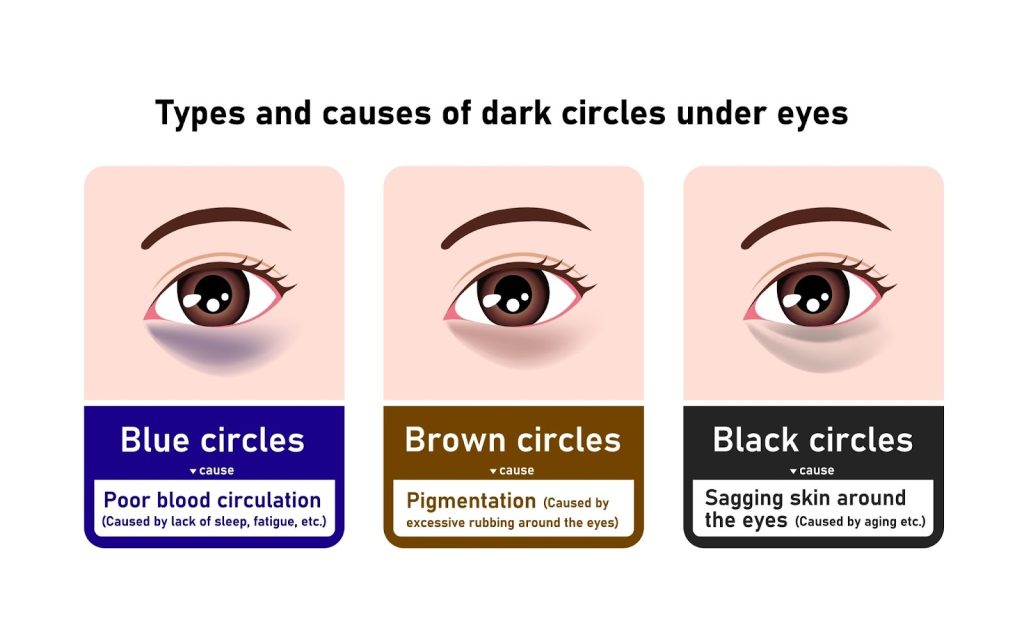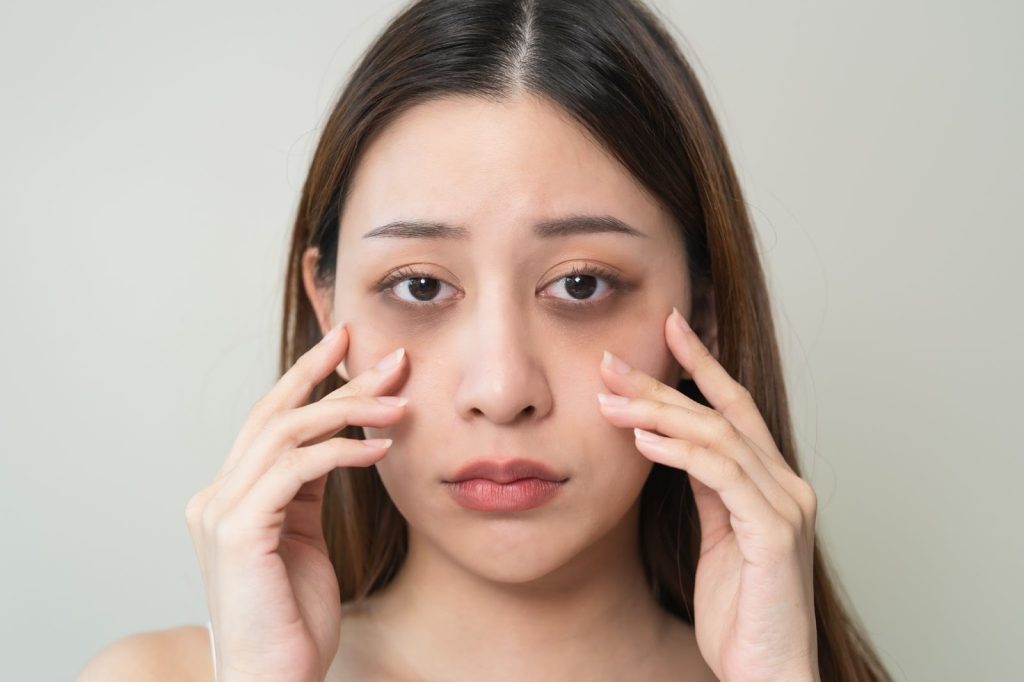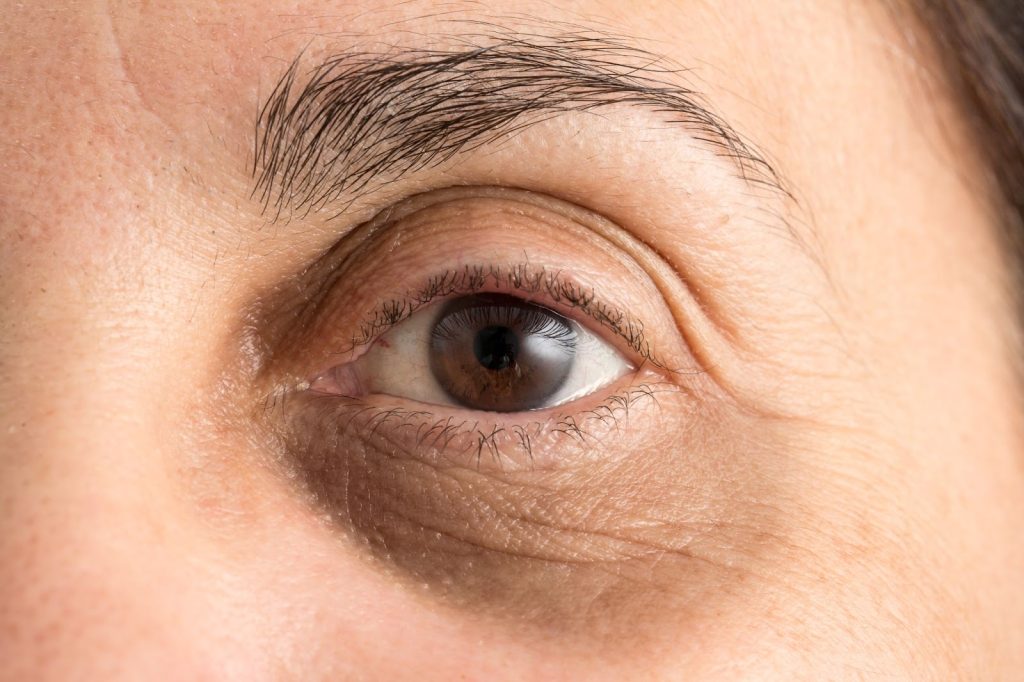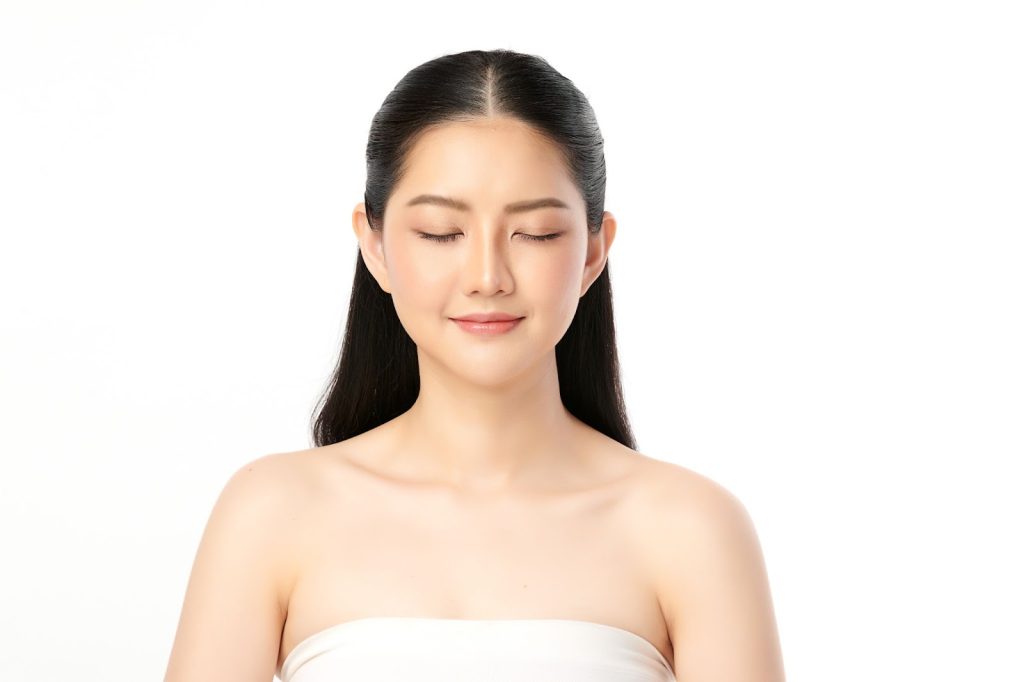What are dark eye circles?
Dark eye circles, also known as periorbital hyperpigmentation, indicate that the skin beneath or around your eyes appears darker, often in shades of blue, purple, brown, or black. These dark circles can give the impression of fatigue or ageing.
These subtle yet significant shadows under our eyes often reflect various aspects of our health, lifestyle choices, and even our genetic background. There are a range of effective treatments are available today designed to rejuvenate and restore the eyes' bright and youthful appearance.

Dark circles are generally categorised into three common types based on their causes and characteristics. These include:
- Pigmented dark circles: pigmented dark circles result from an overproduction of melanin, the pigment responsible for skin colour. They appear as brown or black discolouration under the eyes and are often influenced by genetics, sun exposure, hormonal changes, or ageing.
- Vascular dark circles: vascular dark circles are caused by dilated blood vessels beneath the thin skin of the eyes, leading to a bluish or purplish hue. Genetics, allergies, sinus issues, and poor circulation can contribute to their development.
- Structural dark circles: structural dark circles are related to ageing changes in the skin’s structure and underlying tissues around the eyes. They may result from ageing and thinning of the skin and loss of collagen and fat creates, creating a shadowing effect.

What causes dark eye circles?
Dark eye circles are a complex issue, often stemming from various factors. These typically include:
- Overproduction of melanin
- Dilated blood vessels beneath the eyes
- Sagging and thinning of the skin under the eyes


Who is at risk of dark eye circles in Singapore?
Several factors can increase the risk of developing dark eye circles. These may include:
- Genetics: genetics plays a significant role in developing dark eye circles. If your parents or grandparents had dark circles, you're more likely to have them. This genetic predisposition is due to variations in skin thickness and the amount of pigmentation in the under-eye area.
- Age: ageing is a natural process that contributes to the appearance of dark circles. As we age, our skin loses collagen and elastin, becoming thinner and more translucent. This thinning skin reveals the underlying blood vessels more prominently, giving the under-eye area a darker appearance.
- Allergies: allergies, especially those that affect the eyes, like hay fever, can contribute to dark circles. When you have an allergic reaction, your body releases histamines due to harmful bacteria. Apart from causing uncomfortable symptoms — such as redness, puffy eyes, and itchiness — these histamines also cause blood vessels to dilate and become more visible under the skin. Treating allergies and managing symptoms with antihistamines and other medications can help reduce the appearance of dark circles.
- Lifestyle factors: lifestyle factors such as lack of sleep, high stress, poor diet, dehydration and excessive screen time can exacerbate the appearance of dark circles. Insufficient sleep can cause the skin to become dull and pale, allowing dark tissues and blood vessels beneath the skin to show. Similarly, stress and diet-related issues can impact your skin's health.
- Sun exposure: excessive exposure to the UV rays from sunlight can worsen dark eye circles by increasing melanin production. Melanin is the pigment responsible for skin colour; overexposure to the sun increases melanin production, potentially leading to increased pigmentation in the under-eye area.
- Fluid retention: fluid retention, which can occur due to a diet high in salt, alcohol consumption, or hormonal changes, may cause puffiness and dark circles under the eyes.
- Nutritional deficiencies: lack of essential nutrients, particularly iron, vitamin K, and vitamin C, have been found to contribute to developing dark circles.
- Rubbing: constant rubbing or scratching of the delicate skin around the eyes can cause irritation and inflammation over time, leading to dark circles.
- Medical conditions: those with certain medical conditions such as sinusitis, iron deficiency anaemia, hormonal imbalances, and thyroid disorders may be more prone to developing dark circles.

How are dark eye circles diagnosed?
Diagnosing the cause of dark eye circles typically involves a comprehensive evaluation by a specialist and includes the following process:
- Medical history: your doctor may inquire about your medical history, including any underlying health conditions, medications you're taking, and your lifestyle habits.
- Physical examination: your doctor will conduct a thorough examination of the skin around your eyes to assess the severity of the dark circles and look for any signs of underlying conditions such as allergies or eczema. Your doctor may also evaluate the quality of your skin, including its thickness, texture, and presence of pigmentation, to determine potential causes of the dark circles.
- Underlying conditions: if there is suspicion of an underlying medical condition contributing to the dark circles, additional tests may be ordered. These tests may include blood tests or imaging tests.
What are the treatment options for dark eye circles in Singapore?
There are various treatment options for dark eye circles in Singapore. Your doctor can advise you on the best treatment suitable for your skin type and severity of dark eye circles. Here are some of the common treatment options available in Singapore:
- Topical treatments: topical treatments for dark eye circles often include creams and serums enriched with active ingredients like Vitamin C, retinol, and peptides. Vitamin C is a potent antioxidant that helps to brighten skin and reduce pigmentation. Retinol, a form of Vitamin A, aids in skin renewal and collagen production, helping to thicken the under-eye area. Peptides, meanwhile, support skin repair and firmness. Using these topical solutions consistently can gradually lighten dark circles and improve skin texture.
- Fillers: dermal fillers (link to service page), effectively treat hollows under the eyes. These hollows often cast shadows, contributing to the appearance of dark circles. By injecting fillers, we can plump up the under-eye area, reducing the shadow effect and giving a more youthful and refreshed appearance. The procedure is minimally invasive, with results lasting several months.
- Laser therapy: laser therapy (link to service page) is a treatment option that targets hyperpigmentation and promotes collagen production. By using concentrated light beams, laser therapy can break down pigment particles and stimulate skin renewal. This treatment not only helps reduce the appearance of dark circles but also improves overall skin texture and firmness.
- Lifestyle modifications: while clinical treatments are effective, lifestyle modifications play a crucial role in managing dark eye circles. Adequate sleep, a balanced diet rich in vitamins and antioxidants, proper hydration, and reduced screen time can all contribute to healthier skin. Stress management techniques like meditation and exercise also play a key role in overall skin health.

Our treatments are tailored to address skin issues such as dark eye circles. Schedule a consultation with our skilled professionals here.
Frequently asked questions
Are dark eye circles permanent?
Dark eye circles can be temporary or permanent, depending on the underlying cause. Finding the root cause and implementing suitable treatment measures can help reduce their appearance.
Are dark eye circles a sign of illness?
Dark eye circles are not usually a sign of illness but can be associated with underlying medical conditions such as allergies, anaemia, or thyroid disorders. Consult a doctor if you suspect that you have an underlying illness causing dark circles.
How can I get rid of dark eye circles?
Treatment options for dark eye circles include lifestyle changes (getting enough sleep and staying hydrated), skincare products (eye creams containing ingredients such as vitamin C or retinol), medical treatments (such as laser therapy), and cosmetic procedures (like fillers or surgery).

